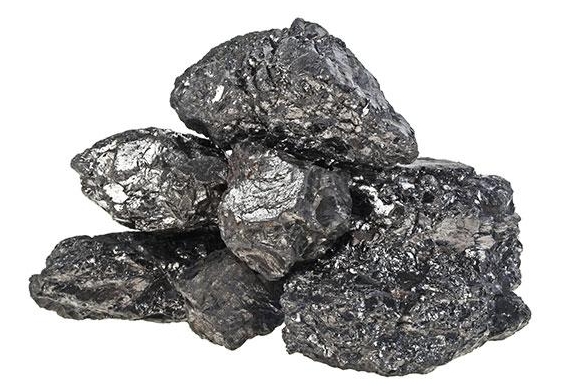
Anthracite calcined coal is used in the production of iron and steel. It has a lower sulfur level, and ash levels are lower than in traditional coal.
It can be calcined by a range of means, such as in Acheson or pot rotary ovens. Anthracite also plays a major role in the manufacturing of cathode and carbon electrodes.

A high-carbon content makes calcined Anthracite Coal a very good source of energy. It has also the highest energy content of all coals. The relative hardness of anthracite and its semi-metallic appearance distinguish it from the softer bituminous type. Anthracite has low moisture content and levels of volatile carbon matter.
In North Devon and Cornwall in England, anthracite can be mined by mining a rock known as Culm Measures. Anthracite can be broken into various sizes to suit different uses. For domestic heating, the United States uses chestnut pea buckwheat or rice. The rice is used most often in automatic stoker stoves.
ECA (Electric Calcined Anthracite) is heated at 2000degC to produce a graphite like product. The product is low in sulfur, moisture and ash. This type is used for applications like the production of aluminum cathode, Soderberg Pastes, and prebake electrodes.
The process of calcination heats the anthracite to high temperatures, eliminating volatile elements like water and gases. This results in a more pure product that can be used in a variety of industrial applications. For example, it is used as a carbon additive in the steel industry and can substitute refinery coke or stone grinds for fuel. Also, it is a more efficient fuel than bituminous home coal.
Due to the increasing investment in infrastructure and construction, there is a rapid growth of the global market for electrically-calcined Anthracite. This is especially true in emerging economies, which are expected to drive the demand for steel products. ECA, as an alternative for coke used to produce metals, reduces emissions of carbon dioxide and drives market growth.
The calcined form of anthracite is an environmentally friendly material with a very high content of fixed carbon, a low content in sulfur and an additive carbon effect that remains stable. The coke-like material is ideal for steel and aluminum.
Anthracite black glossy hard coal is mainly used for steelmaking and home heating. High moisture levels can result in dust and cause blind screens and chutes to clog. Preconditioning calcined alumina with just the right amount water is essential to get the best results. The ideal moisture content is between 0.5 and 0.7 percent by weight, which ensures proper dust control while maintaining the optimum performance of the product.
In the future, increased investments will be made in the infrastructure and construction sectors. These are likely to stimulate the growth of steel production. The future growth of the market is also predicted to be driven by the growing industries in automotive and aeronautics.
In the future, the anthracite market is likely to grow due to the use of calcined coal in aluminum production. Anthracite powder, which is characterized by its purity and filtering characteristics, can also be used for sugar refineries and petroleum refineries. It's also widely used as a water filtration agent in power plants and paper mills.
Calcined anthracite coal has low ash content, making it an environmentally friendly alternative to other carbon additives. Also, it can be used in steel smelting to substitute coke and reduce emissions.
In the future, it is anticipated that the demand for carbon-based materials from various industries will increase. Moreover, rising investments in the construction and automotive sectors are fueling the demand for steel and metals. This is driving growth in the North American market for electrically calcined anthracite.
Market segmentation is based on type and use of calcined athracite. In the global market, the gas calcined athracite market accounted the biggest share. This market segment is predicted to grow rapidly, due to its extensive usage in the production graphite electrodes. It is also used as a filtering medium in the water-treatment industry.

Write a Message